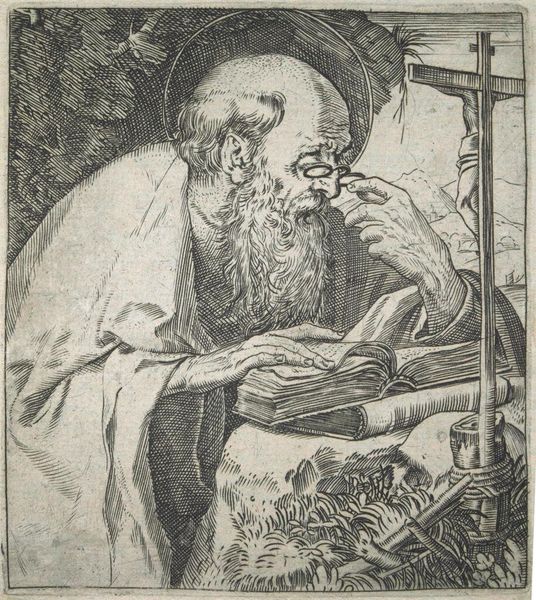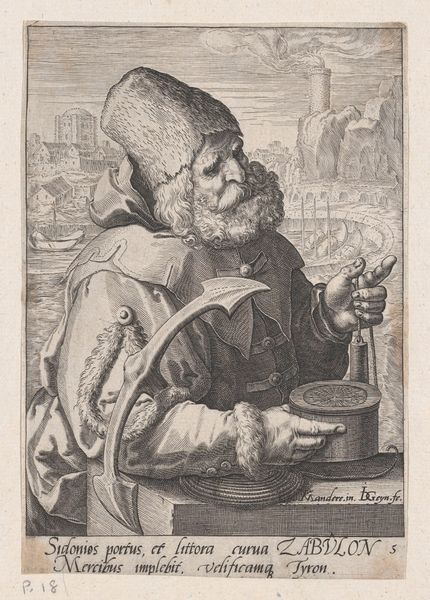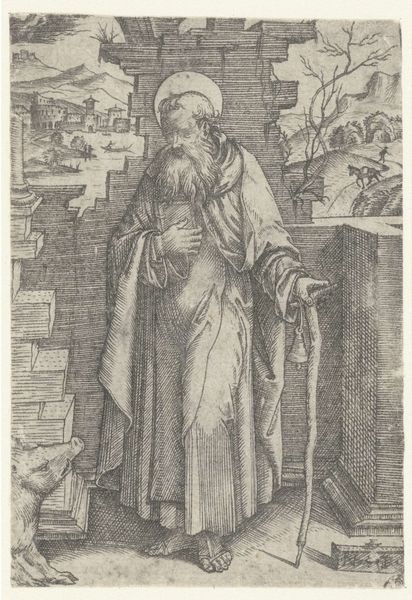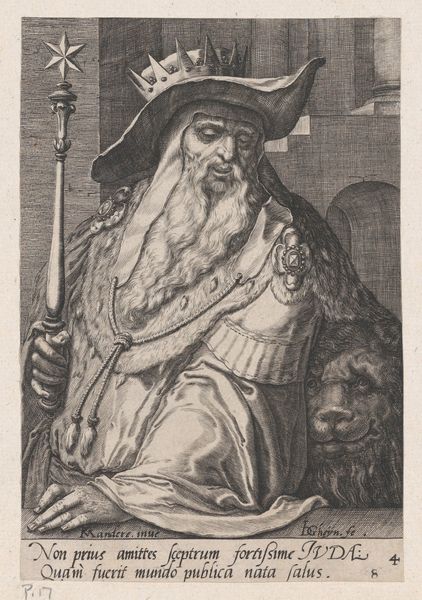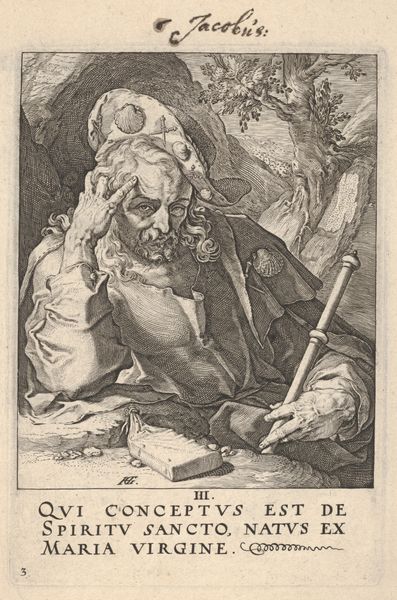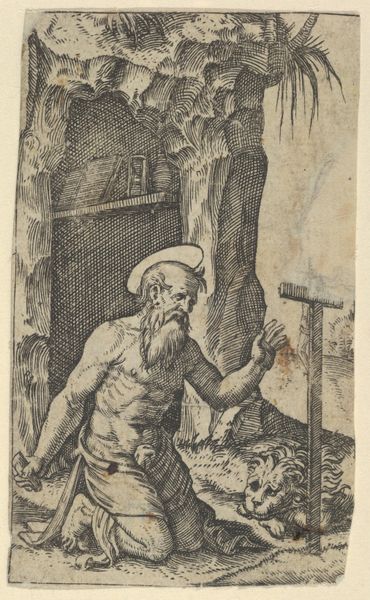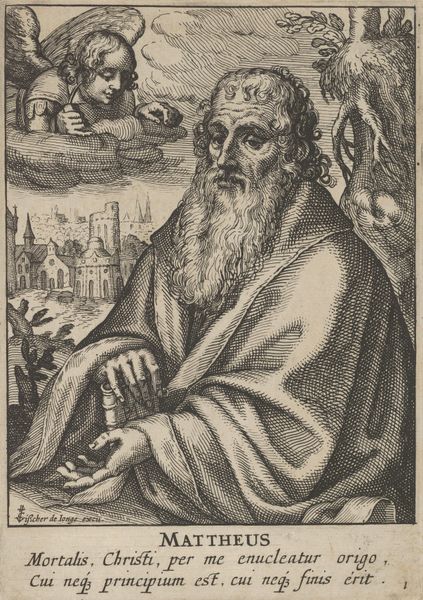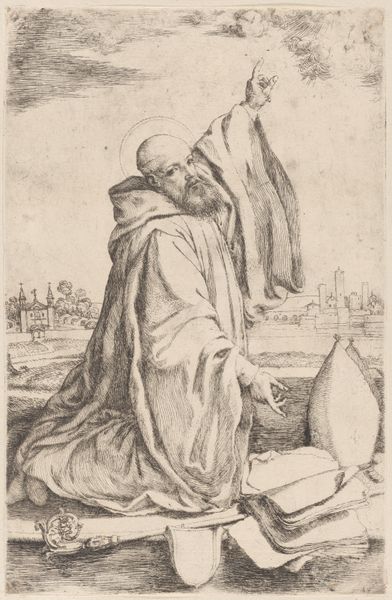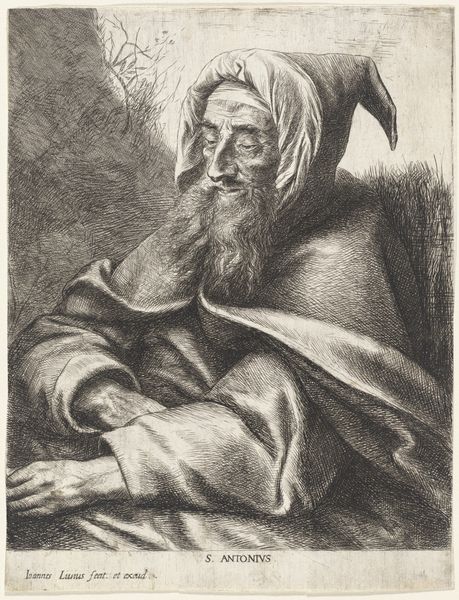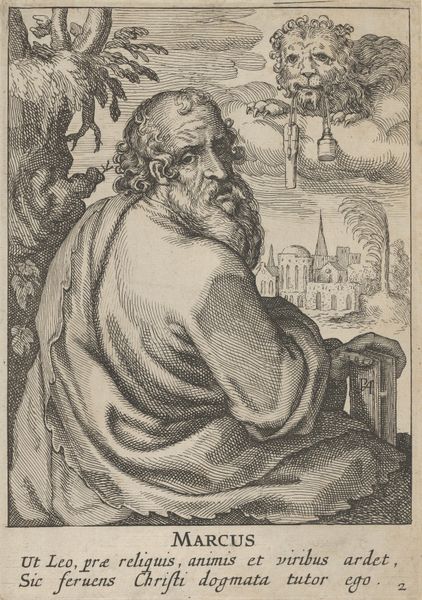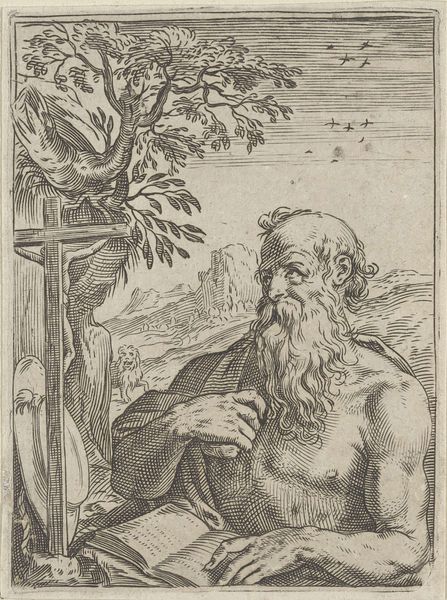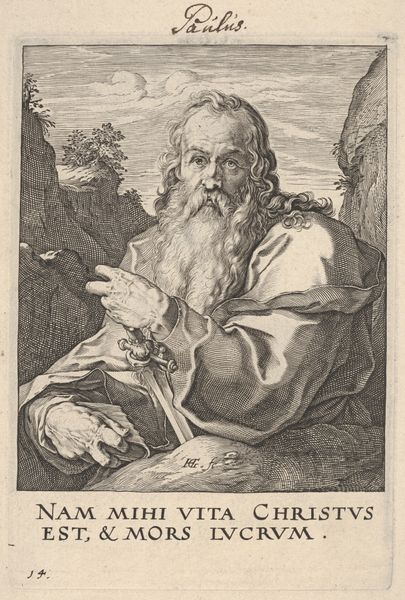
Dimensions: height 99 mm, width 88 mm
Copyright: Rijks Museum: Open Domain
Annibale Carracci made this print of Saint Jerome, we think, sometime in the late 16th century. It’s an etching, meaning that the image was created by drawing into a wax-covered metal plate, then bathing it in acid. The acid bites into the metal where the wax has been removed, creating recessed lines, which then hold ink. The whole plate is wiped clean, and then printed under great pressure. What's fascinating here is that we can read the image as an appreciation of skilled labor. Jerome, translating the Bible, is literally working with his hands, poring over the text with the aid of crafted lenses. And Carracci is doing the same, in a parallel act of interpretation. The quality of the etching is also worth noting. Carracci coaxes a full range of tones from a very simple process. He proves that even the most ostensibly reproducible media can achieve great subtlety, even virtuosity.
Comments
No comments
Be the first to comment and join the conversation on the ultimate creative platform.
